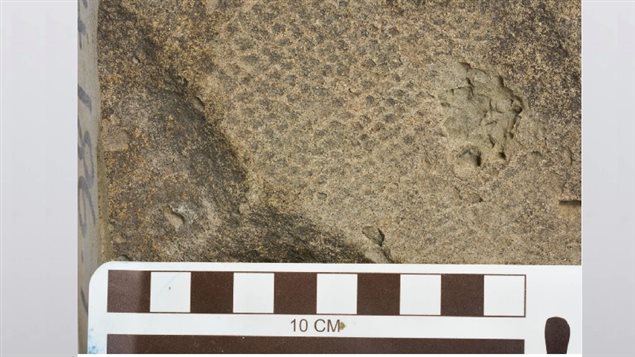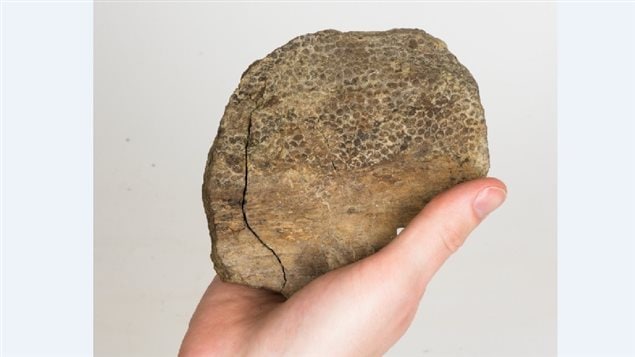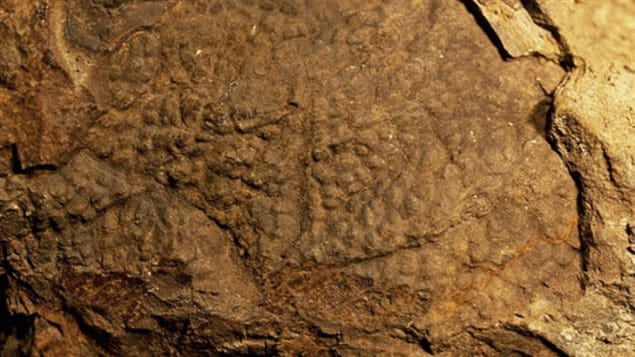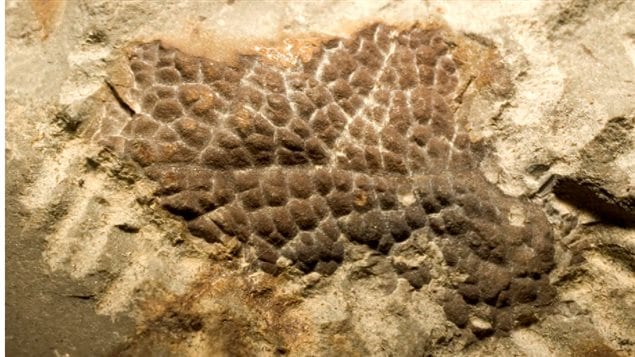It’s something paleontologists dream about, and now for the very first time a positively identified fossil of T. rex skin has been found.
In fact a number of skin fossils were found on expeditions in the badlands of Alberta, in western Canada, and Montana, U.S.A.
Scott Persons is a post-doctoral fellow in the Department of Biological Sciences at the University of Alberta and a collaborator on the study.
Listen
The findings of the international team from Canada, Australia, Sweden, and the U.S.A. were published in the online science journal, “Biology Letters” under the title, “Tyrannosauroid integument reveals conflicting patterns of gigantism and feather evolution” ( full paper HERE)
What the scientists found with the T. rex skin fossil and other related tyrannosaurids in that family species which includes Albertosaurus, Gorgosaurus, and Daspletosaurus, was that the hides were covered in small scales.
Scott notes that although T. rex was the largest of the species (at more or less 7 metric tonnes and up to 12 metres long), you wouldn’t want to meet any of the others which would still be huge between 7 and 9 metres long, and extremely frightening!

An important note he says is that other carnivorous dinosaurs like Velociraptor (about 2 metres long) had a coat of hair-like feathers. Quoted in a University of Alberta press release, Persons said, “They were actually fuzzy, unlike what we see in movies and on television”.
Persons said that speculation among many scientists was that tyrannosaurids would also have similar feather-like hair qualities to their skin.

This new finding shows more evidence that while dinosaurs may have evolved feathers, as some evolved into bigger species, they lost them as they grew in size.

The paper also suggests that the scaly skin on modern bird legs are a response to their activities, like wading for example and that it is possible that the tyrannosaurid scales are evolved from an original feather covering of skin due to changing needs as they grew larger.
Persons says that the dinosaur gigantism evolution of some species and the changes to their skin covering may be similar to the evolution of large land mammals like elephants and hippos which have lost most of their body hair. The theory is that as creatures get bigger, keeping cool is more difficult and more important than keeping warm and an insulating layer of feathers or hair becomes a problem and so it disappeared in bigger animals.

This may not be the full reason. Environmental factors may have also played a role such as living in forested areas, and the level of activity of the creature.
Persons says that with this positive identification of T. rex skin fossils and that of some other relatives, scientists may go back into their fossil collections to see if they have samples that are unidentified or misidentified. It also helps in further developing the evolutionary cycle of dinosaurs.
He says scientists are still searching for mummified remains of a tyrannosaurid which he is convinced are out there somewhere waiting to be discovered.







For reasons beyond our control, and for an undetermined period of time, our comment section is now closed. However, our social networks remain open to your contributions.